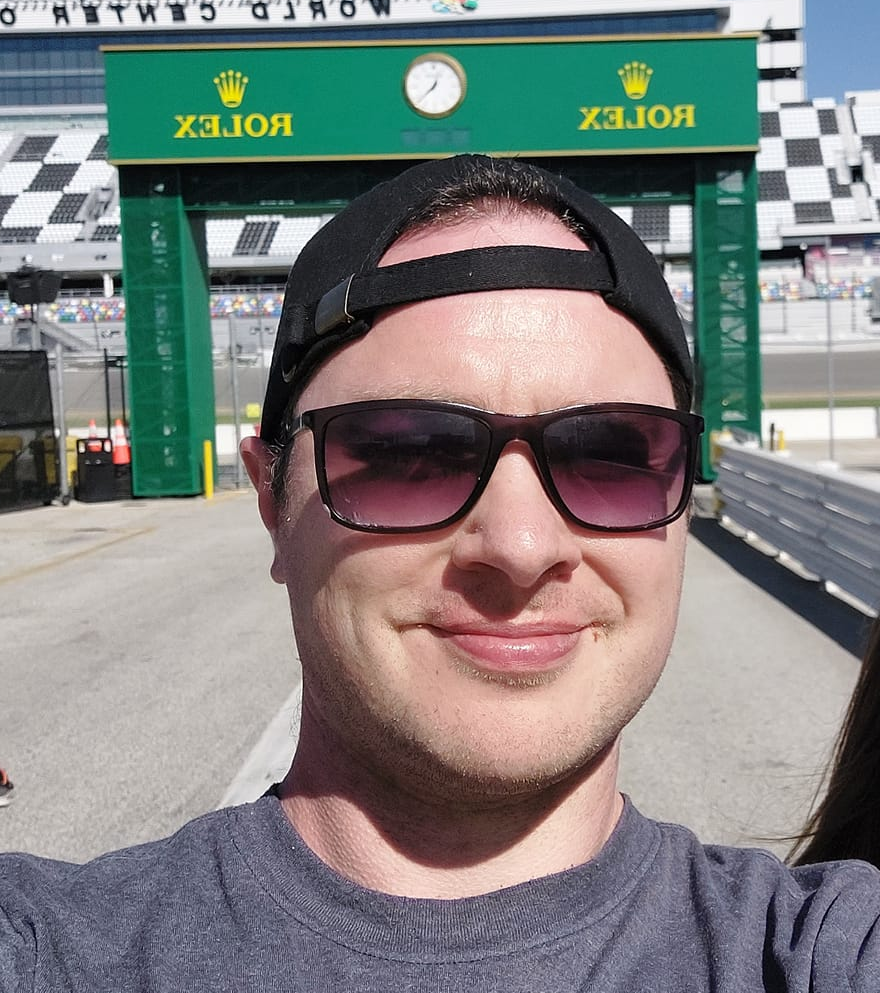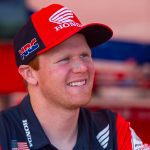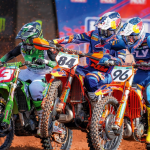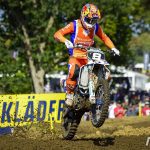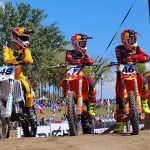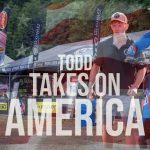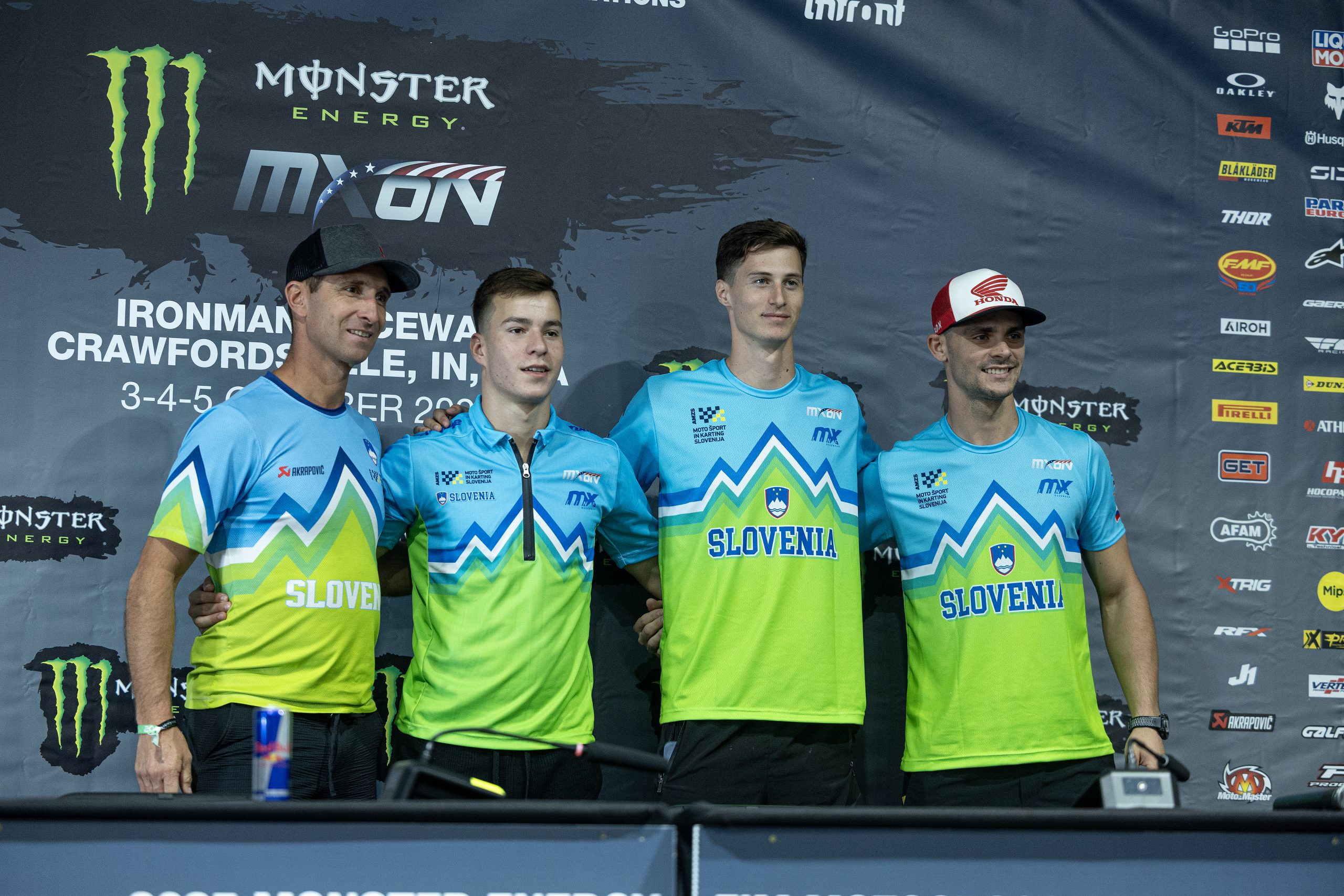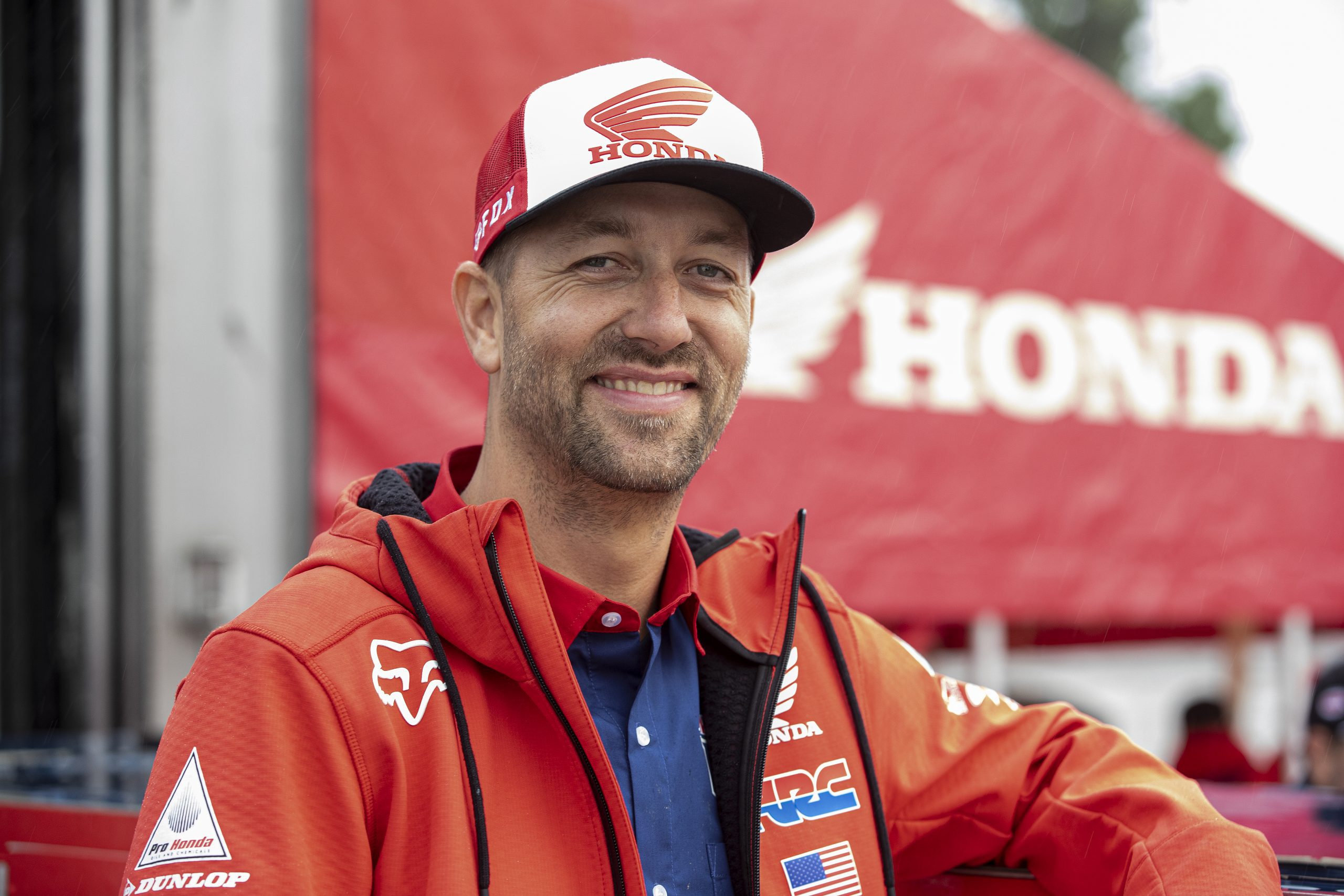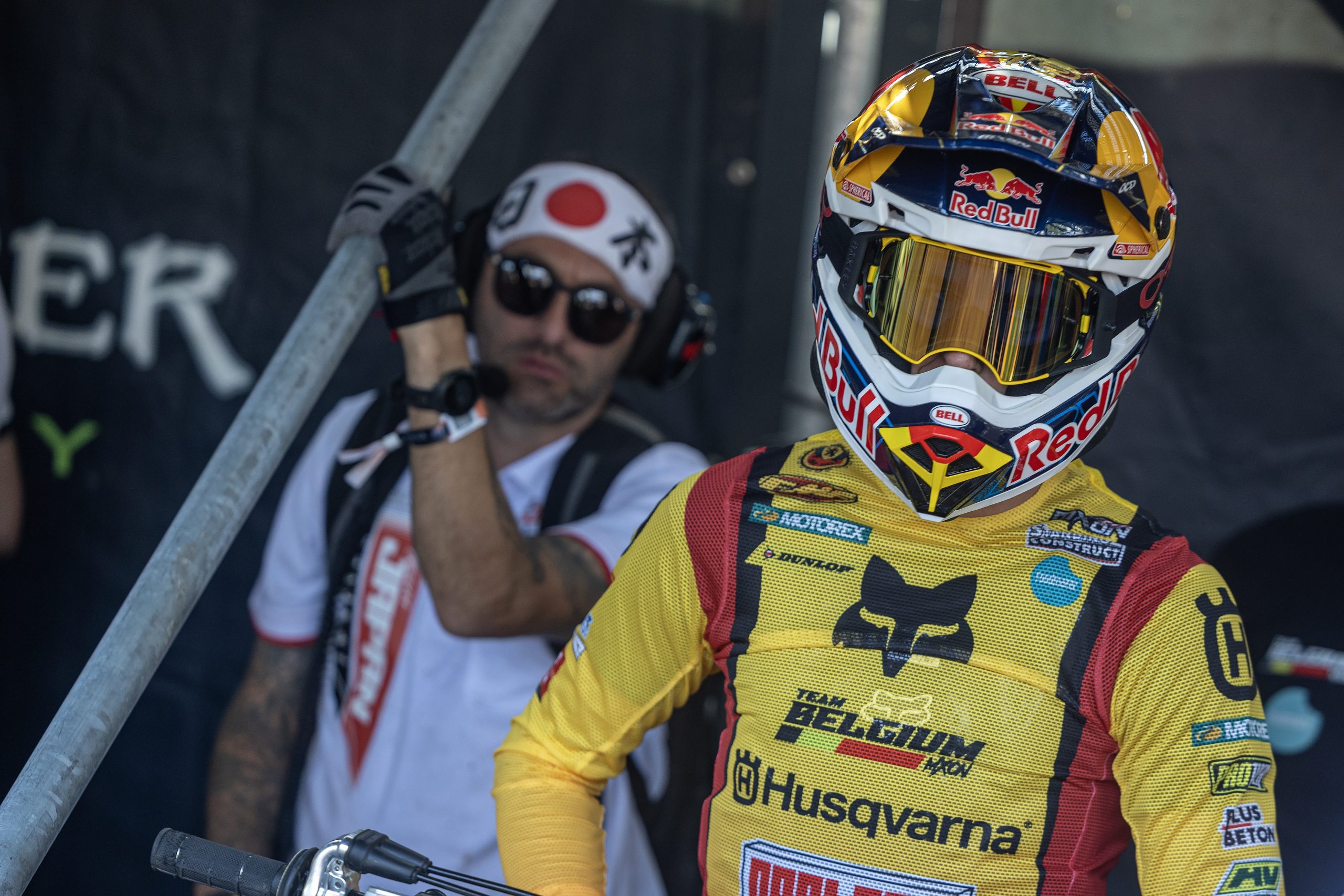250SX (2008) and 250MX US Champion (2010), Trey Canard was for many years a key player in the premier class before hanging up his boots at the end of 2017 after a career marked by highs and lows. But far from leaving the sport behind, Trey has for several years played a crucial role at Factory Honda, testing and developing the official CR-F machines. A man behind the scenes, he has actively contributed to Honda’s success alongside the Lawrence brothers. Naturally, he was present at Ironman for the Motocross of Nations. Marco Kamper caught up with Canard after the Ironman MXoN to discuss a range of topics.
Trey, you’ve been working on development for Honda for quite a while now. It was a good weekend for you guys at the Nations. You must be pleased?
Canard: Yes. Let’s just say it’s been a long journey since I started in this role back in 2018, you know. It’s really cool to see how far the program and the bikes have come. All of our riders – even the ones coming from the World Championship – rode really well this weekend. So I’m proud of that, proud of Honda as a whole, and I hope we can keep growing, evolving, and improving in the future.
You’ve got the Lawrence brothers, and Jo Shimoda as well. But you’re American. Which side were you on at the Nations?
Canard: Let’s just say I tried to stay neutral – I was mainly there to support our riders. But obviously, as an American, there’s always a part of me that’s cheering for Team USA. I was happy to see they had a good race at the Nations. Honestly, they did better than I expected. It was pretty clear from the start that the Australians were going to be really hard to beat. I’m also super proud of Jo. He adapted to the 450 very quickly. He’d only spent four or five days on it before Ironman and had really only done one proper day of testing. Honestly, it’s cool to see what he was able to do.
That quick adaptation – do you think that comes down to his riding style? He rides a bit like the Lawrence brothers, after all.
Canard: I think it’s mainly because the bikes are very similar, and we’ve learned a lot over the past few years to make that transition easier. It all ties together nicely. There are quite a few similarities between the 250 and 450, especially in throttle control, and I think that helped with his transition. We also made some improvements to Jo’s bike throughout the Nations weekend. Of course, there are still things to fine-tune so it suits him better once he moves full-time to the 450, but for a first race on the big bike, it was great.
At the Nations, the fuel regulations are different, and there are new sound limits too. Did that complicate things for you this weekend?
Canard: Honestly… we didn’t do any testing for that. Our schedule is completely packed – it’s crazy. We ride so much during the season. Our team manager, Grant Hutchinson, communicates really well with GET and ETS [racing fuel], so they handle that side of things, which helps us a lot. Even though with the noise limits, there’s a bit more work involved. We also know that when we come to this event, our bikes are always a bit less powerful, and we have to deal with some new challenges. But I wouldn’t say it was too hard to adapt.
You said the bikes are a bit less powerful at the Nations. How does that compare to somewhere like Thunder Valley, with the altitude?
Canard: It’s different again. At the Nations, you’re still kind of in a decent range. At Thunder Valley, you’re really outside your comfort zone, and you’re just not used to losing that much power. I couldn’t tell you exactly how many horsepower we lose there, but by feel, it’s a lot. The first practice sessions are always tough in Colorado, even if we manage to adapt. Generally, we try to smooth out our 450s a bit, so we can always find a bit of extra power for Thunder Valley. It’s trickier with the 250s. In the end, it’s definitely easier to adapt for the Nations than for Thunder Valley.
When you retired, you tried to push for more safety in the sport. Looking at where we are now compared to 15 years ago, do you think things have improved?
Canard: Honestly, I don’t think much has changed – especially from the riders’ side. They still haven’t really tried to come together to voice their opinions, and I think that would be in their best interest. You can see that the AMA is trying to make some efforts, but it’s still minimal. The hardest part is getting everyone on the same page. Everyone has different opinions about safety, about track difficulty… Even just getting everyone in the same room is a challenge. Everyone’s super busy all year – it’s hard to find the time. We’re in October now, and we’ve been racing since January. In two weeks, we’ll start testing for the next Supercross season. Nobody really has extra time to focus on these side topics. This year, I think Ezra Lusk has been working on it with the AMA and Mike Pelletier. I think they see that safety needs to be taken seriously, and I hope they keep going in that direction.
We now see airbags being used – some GP riders are wearing them. Do you think making certain protections mandatory could be a step forward?
Canard: I do, yes. But it’s always tricky because you have to consider personal preferences. You also have to consider that it adds weight, it’s heavy, it’s hot. You’ve got to weigh the pros and cons, especially outdoors where it’s often really hot. You have to ask whether it really gives you better protection, or if it might actually put you in more danger. But I applaud companies like Alpinestars that are looking into it and developing these alternatives. I think more equipment brands should be exploring that.
What I’d really like to see is more investment from promoters and riders on the track side of things. There’s a lot that could be done to reduce the risk of injury. You’re never going to prevent the inevitable – that’s just the sport. You could have us ride in flat fields and we’d still crash, because we’re always pushing the limits to win. But some crashes could be avoided. Look at Glenn Coldenhoff on Saturday – he didn’t do anything wrong; that crash could’ve been prevented.
Track design has already evolved – fewer whoops, no more Dragon’s Backs in Supercross. What do you think the next step should be?
Canard: Hard to say. What I wanted was to gather as much data as possible to pinpoint what caused most crashes, for example. Apparently, they’re starting to collect that kind of data now. I think soon we’ll have more insights into safety issues. But I still think the most important thing is to have rider input before an event. As a rider, I can tell when something’s wrong, when something should be changed, or when there’s a dangerous section. Instead, we show up to a one-day event with no time to make any changes.
We need former riders to get involved and give their opinions. If you’ve never raced at that level, you can’t really see or understand certain things. But taking on that kind of role probably doesn’t pay well and isn’t exactly glamorous. We’d need people who do it because they love the sport and care about the riders. But it probably wouldn’t be a very rewarding job in that sense.
For me, decisions should be made by multiple people. They shouldn’t rely on just one person’s opinion – or one promoter. That’s what I wanted back in the day. But I’m happy to see that now we’re at least taking some steps in the right direction. I just wish we’d take more.
Finally, at a weekend like this one at Ironman – does it ever itch to be on the other side of the fence again?
Canard: These days, I’m at peace with it. I get the same feeling of satisfaction on this side of the fence, you know. When our riders are happy, when the bike suits them, I feel good. I get the same pleasure I did when I was racing. Now I see how much faster everyone has gotten, and I have zero desire to go that fast anymore! So in a way, I don’t really miss the competition.
The level has gone up; Jett’s raised the bar. The young guys keep pushing the limits. But you reach a point – especially in your thirties – where you just don’t want to push those limits or ride that fast anymore. Maybe I still could, but I don’t want to. I’ve moved past that. In the first few years after retiring, I still told myself I could ride at that level… but now, it’s a definite no thanks [laughs].

